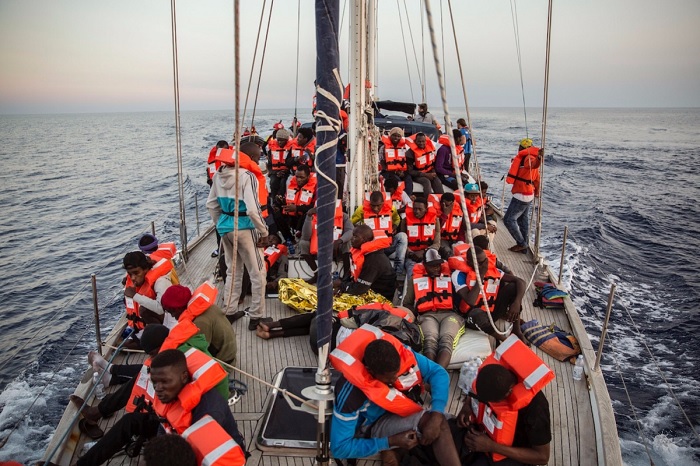
The Migrant Crisis of 2015 has abated, but European nativist and populist parties continue to attempt to stoke the popular backlash against immigrants to fuel their rise.
Italy’s Matteo Salvini, the golden boy of Europe’s anti-immigrant populists, even rode the issue into government last year, before marginalizing himself with a bid to force early elections and, more recently, misplaying the politics of the COVID-19 crisis.
Nevertheless, Europe’s other far-right populists, like France’s Marine Le Pen, continue to hammer on anti-immigrant sentiment, hoping it will remain a potent issue in upcoming elections. In the midst of a global pandemic, it is not clear it will have the same electoral sway as it did in 2015, when a wave of refugees and immigrants arrived in Europe from Syria and elsewhere in the Middle East and Africa. Still, the threat is enough to keep centrist governments toeing a tough line on immigration at home, even as they work with countries of origin and transit to restrict migration, thereby driving asylum applications back to pre-2015 levels.
Anti-immigrant sentiment was central to U.S. President Donald Trump’s winning 2016 campaign, and he has subsequently reshaped American security policy around stopping illegal immigration. His administration is even returning asylum-seekers to the Central American countries they transited on the way to the U.S. border, despite the lack of security that is driving people to flee those countries. The issue did not have the same resonance in his re-election campaign this year, though, in part because it was difficult for any issue besides the coronavirus pandemic to break through and capture attention. It may also reflect the success of the measures that countries south of the U.S. border have taken to prevent the arrival of immigrants and refugees. Trump’s pressure on Mexico to secure its southern border appears to have stemmed the flow of refugees and migrants attempting to reach the United States.
With political debates over migration often dominated by short-term strategies, many of the persistent drivers, including persecution, conflict and war, go unaddressed. The United Nations Refugee Agency’s most recent report, from June, counted 79.5 million forcibly displaced people around the world at the end of 2019, up from 70 million in 2018. Among them were 26 million refugees and 45.7 million internally displaced people. While global leaders might seek to curb migration by spurring economic growth, they cannot ignore the role played by conflict and persecution, which often make asylum-seekers unable to return to their home countries. There has also been little global focus on future drivers of migration, including climate change.
Meanwhile, efforts to craft some kind of global consensus on migration are falling victim to the same forces that are demanding quick solutions to a complex issue. Following America’s lead, several countries backed out of the U.N. Global Compact on Migration, which was ratified in early 2019, despite it being only a nonbinding framework to help address some of the key issues surrounding the global migration boom—including how to institute policies that ensure people on the move are treated humanely.
WPR has covered migration in detail and continues to examine key questions about what will happen next. With migration levels to Europe falling, will right-wing parties still be able to use the issue for political gain? How will migration policy be affected by the outcome of the U.S. presidential election? How will the coronavirus pandemic and its economic fallout affect migration flows? Below are some of the highlights of WPR’s coverage.
